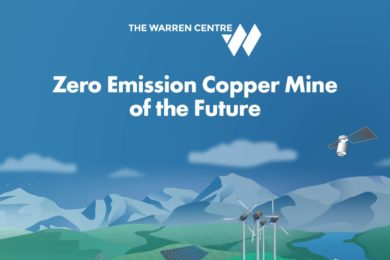The University of Sydney’s Warren Centre for Advanced Engineering has set out how Australia’s copper mining sector can become emission free over the next 30 years through the use of emerging technologies in a new report.
The Zero Emission Copper Mine of the Future report is a ‘world first’ roadmap, commissioned by the International Copper Association Australia (ICAA), the university says.
Within the report, five key target areas are identified for technological innovation to reduce and ultimately eliminate mining emissions: exploration, movement of materials, ventilation, processing, and water use.
In the “material movement” section, specifically, autonomous equipment, battery-electric vehicles, hybrid diesel electric trucks and trolley systems, “hydro-hoisting”, hybrid electric vehicles and hybrid hydrogen electric vehicles are included.
The university explained: “The range of technologies copper supports is vast: autonomous drones and robot machinery, next-generation sensors, mixed reality (immersive technology), wearable tech, in-situ ore recovery, novel leaching processes and on-demand ventilation are just some examples.”
Achieving cutting-edge innovation will also depend on collaboration across five strategic levers: policy and programs, industry networks, capital enablers, future knowledge and an open mindset, according to the university.
Director of the Warren Centre for Advanced Engineering, Ashley Brinson, said: “A zero-emission copper mine of the future will be significantly different from the current copper mining system, and will require fundamental changes in how the mine sources, consumes and abates energy.
“To achieve a zero-emissions future, ‘moonshot’ type thinking is needed and will require a joint commitment from research bodies, the public and private sectors.”
John Fennell, ICAA CEO, said the resources sector, and copper mining in particular, faces big challenges – falling ore quality, fewer new deposits and much tougher licence to operate rules.
“But we need to do things differently going forward,” he said.
Fennell said this report is the first of three blueprints or horizon reports over three years, designed to clarify the vision, establish viable technologies, create an innovation culture, and bring the industry together.










